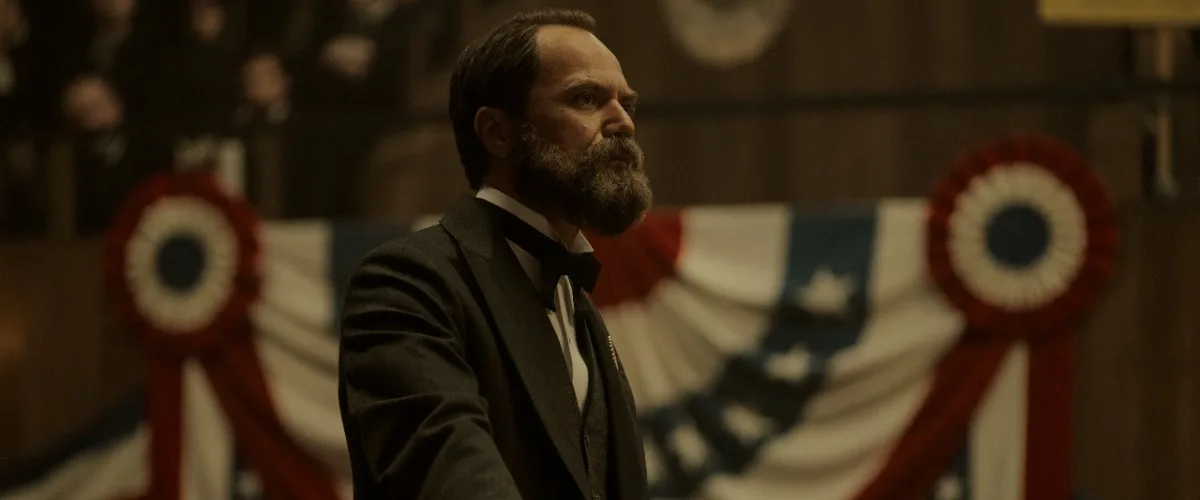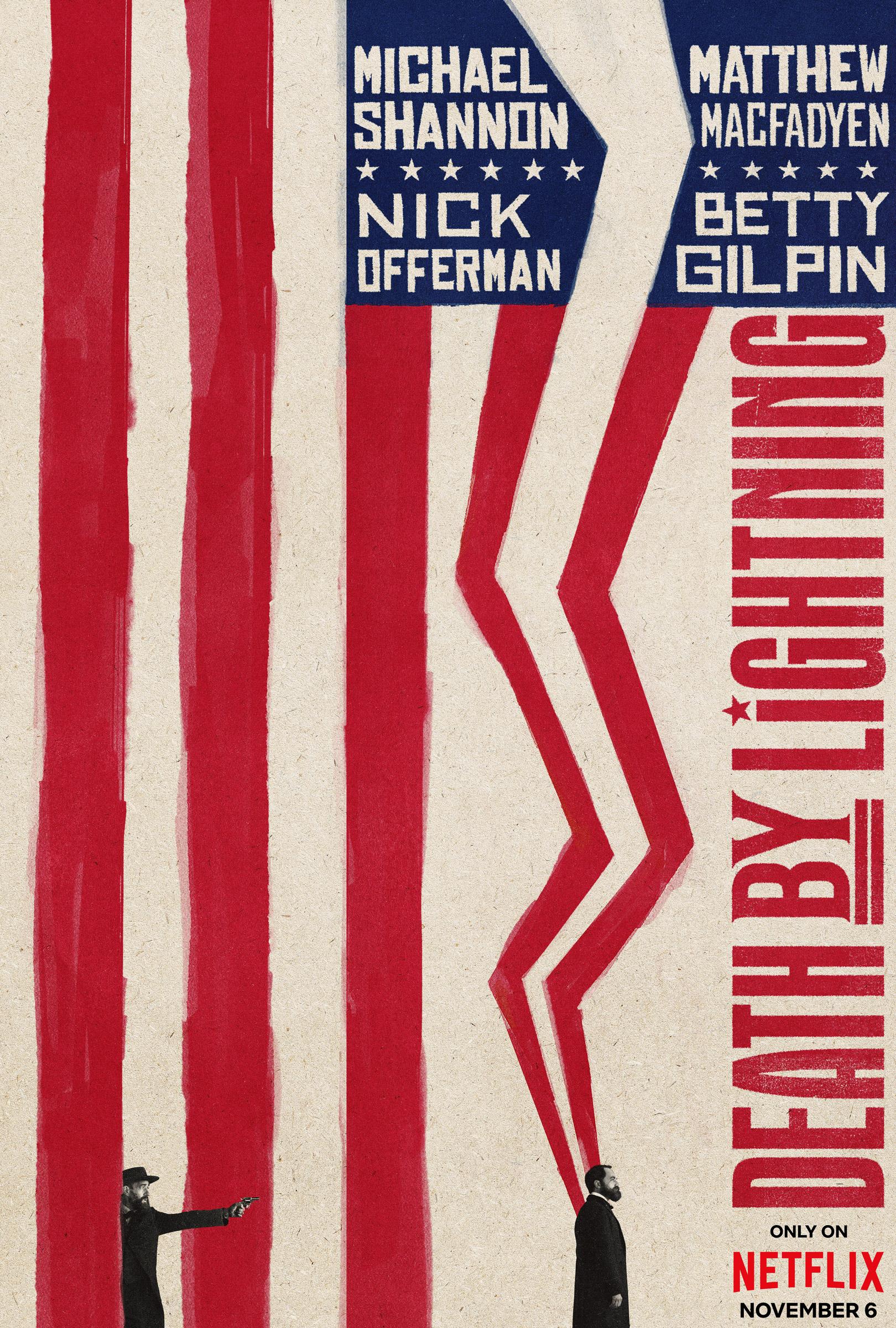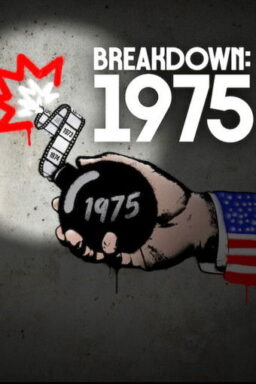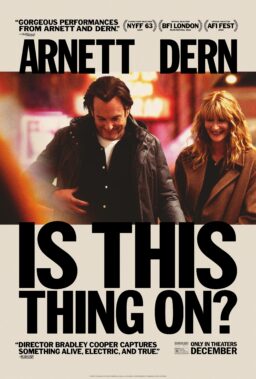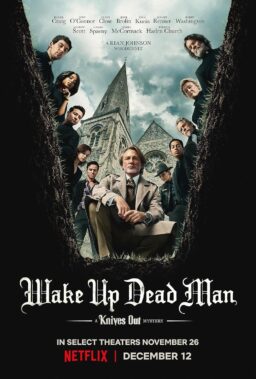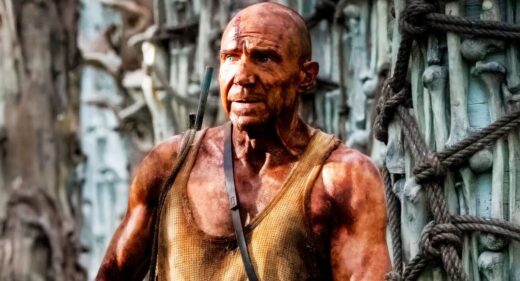“Assassination can be no more guarded against than death by lightning, and it’s best not to worry about either.” — President-elect James A. Garfield in a letter to Secretary of the Treasury John Sherman, responding to concerns about threats to his life.
The Netflix historical drama mini-series “Death by Lightning” opens with a brain in a jar on the floor while Sly and the Family Stone’s “Everyday People” is playing on the radio. If that’s not a grabber, I don’t know what is.
We’re in the year 1969, at what was then known as the Army Medical Museum, as a crew packs up a warehouse filled with artifacts. A box is dropped. A dust-covered specimen jar containing a human brain rolls onto the floor. A worker examines it and exclaims, “Who the f*** is Charles Guiteau?”
It’s a fair question. Ask someone to name presidential assassins, and they’re sure to respond with the names of John Wilkes Booth and/or Lee Harvey Oswald. Even failed assassins such as Manson disciple Lynette “Squeaky” Fromme and John Hinckley Jr. are more familiar names than that of the delusional Charles Guiteau, who shot President James A. Garfield at a Washington train station on July 2, 1881, with Garfield succumbing to his wounds 79 days later. (McKinley assassin Leon Czolgosz is another wretch whose name has been largely lost to history.)
This is part of what makes this tightly spun yet thoroughly informative four-chapter series from creator Mike Makowsky (“Bad Education”) and executive producers David Benioff and D.B. Weiss (“Game of Thrones”) so enthralling. I daresay most of us aren’t scholars about the circumstances that led to Guiteau taking aim with a .44-caliber British Bulldog revolver and shooting Garfield from behind in that Washington train station—and “Death by Lightning” is filled with “I was today years old when I learned…” moments. Although the series regularly indulges in purely fictional dramatic flourishes (as does every project of this kind), this is a gripping and essentially truthful telling of the tale, with magnificent work by two fine actors who are clearly relishing the richness of the roles they’ve been given: Michael Shannon as Garfield, and Matthew Macfadyen as Guiteau.
After that intriguing opener, the series proper opens in 1880, with Guiteau being held at New York City’s notorious prison and courthouse, “The Tombs,” and presenting his case to a skeptical parole board. (Throughout, Guiteau puts on airs, but he always looks a bit grimy and sweaty, as if he’d just fled some scene or another.) “Are we not a nation built wholly from rogues and migrants and freethinkers?” he states in grand fashion, and it’s clear from the get-go that this man is full of it, and perhaps mentally ill. Cut to Mentor, OH, and the Garfield family farm, where the congressman, his loving and spirited wife Lucretia (the invaluable Betty Gilpin), and their brood of children are living a relatively comfortable and happy life, far away from the cynical machinations of national politics. That all changes when the daily mail arrives, and Garfield tells Lucretia, “It’s a letter from John Sherman.”
“General Sherman’s little brother?” says Lucretia.
“And the Treasury Secretary,” comes the reply. “Says he’s gonna run for president.”
Granted, that’s some pretty blatant explainer dialogue right there, but from time to time, we need these little footnotes to keep abreast of the story. Garfield makes the journey to Chicago and the Republican National Convention at the Industrial Exposition Building on Michigan Avenue to give the nomination speech for Sherman—but in an expertly staged, politically savvy, and at times flat-out funny extended sequence, we see how the little-known Garfield himself emerges as the nominee after 36 ballots. (Budapest stands in for Chicago and Washington, D.C., and while the architecture is magnificent, it looks like…Budapest.) When Shannon as Garfield stands in a jam-packed hall, commands the room, and exclaims, “We should join together in lifting into the firmament of the Constitution those immortal pillars of justice and truth”—that’s pure thespian gold.
With director Matt Ross and cinematographer Adriano Goldman providing arresting visuals that give the proceedings a stately yet lived-in authenticity, “Death by Lightning” sticks to a refreshingly linear timeline, save for a few well-placed flashbacks that actually serve to inform the story rather than jerking the viewer back and forth with little payoff. “Death by Lightning” is filled with familiar and welcome faces playing real-life figures—there’s Shea Whigham as the vile and corrupt Sen. Roscoe Conkling! Bradley Whitford as the wily veteran Republican political force James G. Blain! Vondie Curtis-Hall as Frederick Douglass! Nick Offerman is all-in with a boisterous yet empathetic performance as Vice-President Chester Arthur, even though the script turns Arthur into something of a Bluto Blutarsky of politics, prone to booming, “Music! Fighting! Sausages” as he bullies and parties his way through D.C.
Macfadyen captures Guiteau’s increasingly desperate and pathetic attempts to ingratiate himself into Garfield’s inner circle, as Guiteau manages to wrangle several meetings with Blaine and even secures a brief, one-on-one session with Garfield. Still, he is never taken seriously, never regarded as more than a con man who somehow worked his way into the room and is to be ushered out as quickly as possible.
“Death by Lightning” remembers Garfield as a decent man who never wanted to be president but might have made for a good one had he been given the time. And it remembers Guiteau as one in a long line of broken and twisted souls who believed they could attain some significance by taking the life of someone who actually was making a difference.

